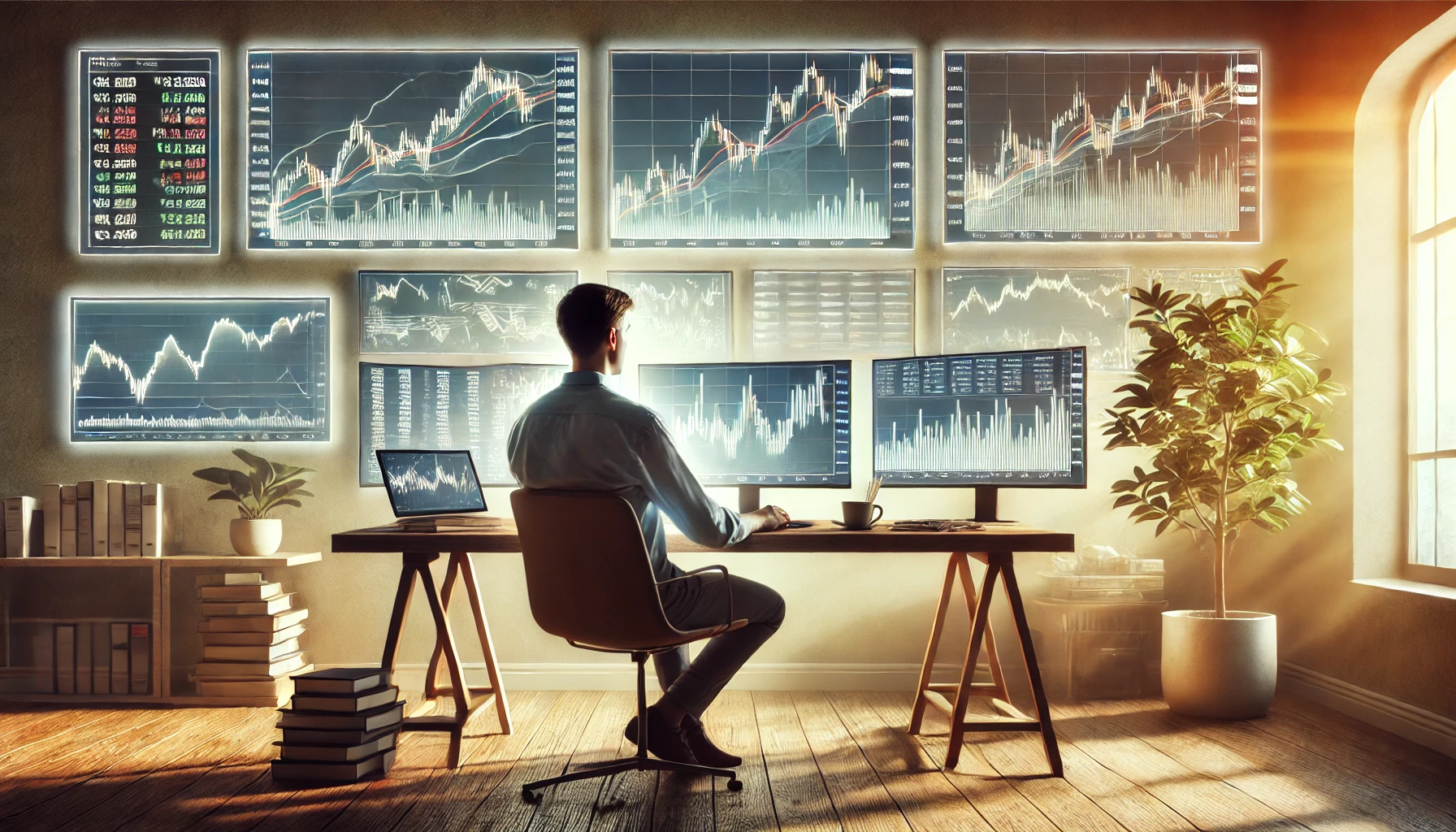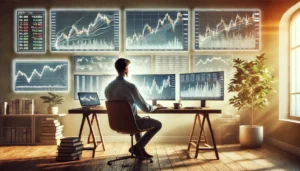In the previous article, we explored the technical foundation for trading—the strategies, risk management tools, and methods that serve as the basic building blocks of any successful trading career. But as you begin to trade, you quickly realize that success goes far beyond strategies and tactics. The technical side of trading is only a small part of the journey; the real challenge lies in mastering your mind, emotions, and relationship with the market.
Trading, like life, is a mirror. What you see in the market often reflects what you see within yourself. Your fears, your desires, your discipline—or lack of it—all surface as soon as you put money on the line. This is why some of the most successful traders often talk less about the market itself and more about their internal struggles and self-awareness.
To become a truly great trader, you must evolve from being just a “strategist” to becoming someone who moves effortlessly with the ebb and flow of the market. Trading should become as natural as breathing, not forced or strained, but flowing smoothly with the rhythm of the market. To do this, we need to step away from the charts and numbers for a moment and dive deeper into the wisdom that has helped traders align their inner world with the external realities of the stock market.
This article is about how to cultivate the right mindset, build resilience, and approach the market with clarity, all while shedding the mental baggage that hinders most traders. We will draw from several key books, each one offering a unique perspective on how to go beyond mere tactics and truly embody the essence of trading mastery.
Finding Calm in the Chaos: The Zen of Trading
In “Zen in the Markets” by Edward Allen Toppel, we begin to see how the market is a battlefield, not of stocks and numbers, but of the mind. Toppel explains that most traders lose because they bring too much baggage to the market—too much fear, too much greed, and too much attachment to the outcome. The market, he explains, doesn’t care about your emotions or what you want; it simply moves, like the wind or the tides. The trick is not to control the market but to control yourself, so you can move with it rather than against it.
Zen, at its core, is about detachment. It’s about learning to let go of outcomes and focusing instead on the process. When you let go of the need to be right, to make money, or to prove something, you can finally begin to see the market clearly. Trading, as Toppel describes, becomes a practice of mindfulness. You focus on the present moment, not worrying about what might happen or regretting what has already passed. In this space of awareness, you trade with clarity and flow.
Mastering Your Mindset: Trading in the Zone
Mark Douglas’ “Trading in the Zone” is perhaps one of the most recommended books on trading psychology, and for good reason. Douglas points out that many traders already know how to trade, but they struggle with execution because they haven’t mastered their mental state. Fear, greed, and overconfidence sabotage even the best-laid plans.
Douglas explains that trading is a game of probabilities. No trade is ever guaranteed to be a winner, and yet many traders act as if they can predict the market with certainty. This leads to emotional swings—excitement when a trade is going well, panic when it turns against them. Successful traders, Douglas argues, have learned to embrace uncertainty. They know that not every trade will work out, but they trust the probabilities in the long run.
The key is to stay “in the zone,” a state of mental focus where you remain detached from the outcomes and simply execute your strategy without fear or hesitation. This mental clarity allows traders to act decisively, knowing that even if a trade doesn’t work, it’s just part of the overall process.
Strengthening Your Resilience: The Art of War
Although not directly about trading, “The Art of War” by Sun Tzu has been applied to markets by traders for decades. Sun Tzu’s timeless principles on strategy, patience, and adaptability resonate deeply with the world of trading. He teaches us to know ourselves, to know our opponent (the market), and to prepare for battle without attachment to the outcome.
One of Sun Tzu’s core lessons is the importance of preparation. In trading, this means not only understanding the technical aspects of the market but also understanding your own weaknesses. Are you too impulsive? Do you hold onto losing trades out of stubbornness? By knowing yourself deeply, you can anticipate these weaknesses and create strategies to counteract them.
Patience is another virtue that Sun Tzu emphasizes. Much like in war, timing is everything in trading. Sometimes, the best move is to wait. Markets are driven by cycles and trends, and a good trader knows when to strike and when to hold back.
Embracing Randomness: Fooled by Randomness
In “Fooled by Randomness” by Nassim Nicholas Taleb, we are reminded that not everything in the market can be controlled or predicted. Markets are influenced by chance events, randomness, and chaos, often more than we like to admit. Taleb argues that many traders mistake luck for skill, and when the market turns against them, they are left unprepared.
For the mindful trader, understanding the role of randomness is liberating. You begin to see that not every loss is a failure and not every win is proof of genius. This humility allows you to remain flexible, adapting to the market as it changes, rather than rigidly sticking to strategies that may no longer work.
Taleb’s work also introduces the concept of “antifragility,” which is the idea that some systems (and traders) actually thrive under stress and uncertainty. Rather than trying to eliminate risk, an antifragile trader learns to benefit from it, by staying open to opportunities and learning from every experience.
Building Resilience: Antifragile
In “Antifragile” Taleb goes further by exploring how traders, like other systems, can thrive under uncertainty and volatility. Instead of fearing chaos, the antifragile trader learns to use it to their advantage. How? By diversifying, staying nimble, and embracing small risks while avoiding catastrophic ones.
In trading, this means not putting all your eggs in one basket. It means staying flexible, ready to pivot when the market shifts. It also means building your system—whether it’s a trading strategy or a portfolio—in such a way that it actually benefits from market volatility, rather than crumbling under pressure.
Trusting the Process: Mastery
In “Mastery” by Robert Greene, the journey to becoming a master trader is likened to the process of mastering any complex skill. Greene shows that mastery comes not from sudden insights or shortcuts, but from a deep, focused practice over time.
To become a true master, Greene argues, you must be willing to embrace the long, often tedious process of learning, failing, and improving. In trading, this means sticking with your strategy, learning from every trade, and constantly refining your approach. Over time, this process leads to intuition—a deeper, almost unconscious understanding of the market that allows you to act decisively without second-guessing yourself.
Conclusion: The Art of Trading
As you move forward in your trading journey, you begin to see that the market is not something to be conquered or tamed. Instead, it’s a living, breathing entity that requires respect, patience, and humility. The books we’ve explored in this article are not about giving you a rigid set of rules to follow; they are about guiding principles that can help you navigate the market with clarity and purpose.
Ultimately, the path to becoming a master trader is the same as the path to mastering anything in life. It requires discipline, self-awareness, and a willingness to learn from your mistakes. By embracing the principles of detachment, patience, and resilience, you can begin to trade not with fear or greed, but with calm confidence.
The market, like life, moves in cycles. There will be times of growth and times of decline, but with the right mindset and the right approach, you can learn to move with these cycles effortlessly, trading as naturally as you breathe.
Move on to The Art of Trading: Mastering Yourself (Part Three).

